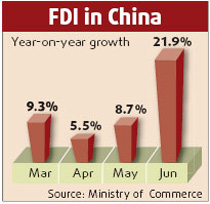Netizens across the nation received 69.4 billion pieces of spam last year, up 38.8 percent from 2006; and the losses caused by unsolicited mail amounted to 18.84 billion yuan ($2.6 billion), up 80.6 percent.
These are the results of a survey released yesterday by Beijing-based Internet Society of China (ISC).
The top three categories of spam were ads for online shopping, online business and adult shops, it said.
But the survey also found that spam accounted for 56 percent of e-mails that a Chinese netizen received per week in 2007, down 17 percent year on year.
Also, the country slid to third from second on a warning list of worldwide spam senders. China was ranked second after the US every year since the list was first compiled in 1998.
"It is huge progress that the spam produced in China last year accounted for only 4.92 percent of the global total, compared to up to 8.5 percent in the past," Huang Chengqing, the ISC secretary-general, told a press conference.
He said more than 1.4 million IP addresses sending out spam had been blacklisted thanks to the anti-spam platform set up in June last year.
The anti-spam processing platform (www.iscbl.anti-spam.cn) launched by the ISC posts a regularly-updated blacklist of spam servers, allowing telecom operators and mail service providers to access the information.
A "white list" of mail service providers has been posted on the website, boosting the development of service providers such as popular portals sina.com, 163.com and sohu.com.
"The junk email took up 10 percent of the bandwidth every year," a manager surnamed Mo with 163.com told China Daily.
(China Daily January 24, 2008)


